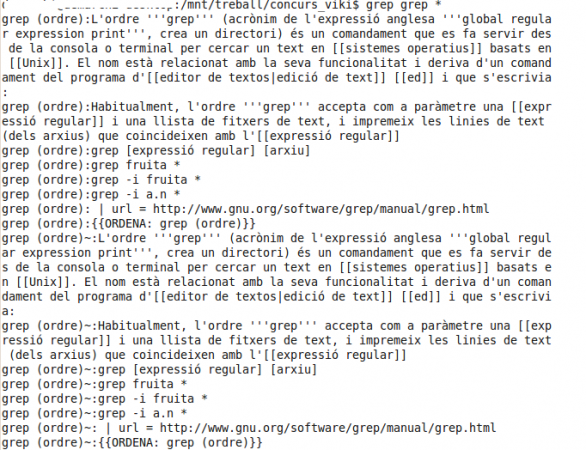

This way, grep will return lines that match both Holmes and holmes. You can ignore case matching with the -i option: grep -i search_pattern filename Case insensitive searchīy default, the search with grep is case-sensitive. Let's see a few common use cases of the grep command. You probably already know that to search for a particular text or pattern in a file, you have to use grep like this: grep search_pattern filename
Grep usage pdf#
I have included a PDF cheatsheet which you can download, print and keep on your desk. It's good if you are already familiar with the grep command but you keep forgetting which option does what. I'll just the common options and their explanation here. Linux Handbook already has a detailed article on grep, so I won't go in depth here. This article lists the most common grep commands with quick examples. However, you'll end up using a handful of grep commands most of the time. You probably will never need or use all of them. The grep command has a huge number of options and use cases.

It's especially helpful when you are troubleshooting or debugging. Further, if the file size is huge then use ‘less’ command than ‘more’ command as ‘less’ command does not read whole content of file and it’s faster.Grep is a powerful UNIX command that lets you search inside the file contents on a variety of parameters. In addition, now we know that if the file is small use ‘cat’ command else we can use ‘more’ or ‘less’ command. Output Same output as last command but with line number.įrom this article, we have learned about three powerful file viewing commands in Linux. ‘less’ command does not read whole content of a file unlike ‘more’ commandĪpproach 2: To view the content of a large file with line number Example $less –N more.txt ‘less’ command is faster than ‘more’ commands. Therefore, some important differences are like Now we may be thinking what the differences between more and less command is. Approach 1: To view the content of a large file Example $less more.txt ‘Less’ command is almost similar to ‘more’ command but it has more advantages. If we press enter then we can see both files. Output 73 sudo kill -9 1136Ĩ7 sudo lsof /var/cache/apt/archives/lockĩ8 sudo add-apt-repository ppa:ubuntu-mozilla-daily/firefox-auroraĪpproach 2: To view multiples files Example $ more more-file1.txt more-file2.txt We can use ‘spacebar key’ to go faster reading of the file.

Now this is the output of ‘more’ command for one screen and it’s 3% of the whole content.The more we press ‘enter key’, we will see more content of the file like below output. $history > more.txtĪpproach 1: To view the content of a large file Example $more more.txt Let us create as fille name ‘more.txt’ where content is the history of the user. Now we need one large file to use more command. This maybe a limitations of cat commands. We have understood that cat command displays all the content of a file into screen even if the file has so much data. Then we can use below command Example $cat cat-file.txtĪpproach 2: To view whole content of a file with line number Example $cat –n cat-file.txt Suppose there is one file in Linux and we want to view all the content of that file in screen. ‘cat’ command Approach 1: To view whole content of a file We will start with most widely used command ‘cat’ and then move on to ‘more’ and ‘less’ command. Though there are many options or arguments for each command, but in this article we will try to explore the most commonly used options for each commands with some examples. Depending on the user requirement, either cat or more or less command can be used. Instead, we can use other Linux commands like ‘cat’, ‘more’ and ‘less’.

Sometime in Linux, we do not want to open a file using vi or vim to see the content of file.


 0 kommentar(er)
0 kommentar(er)
